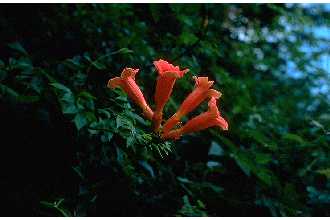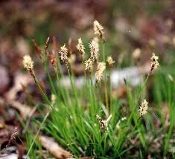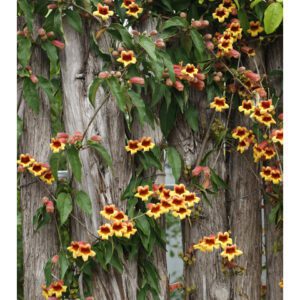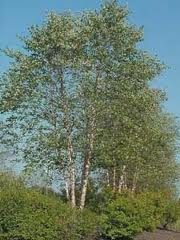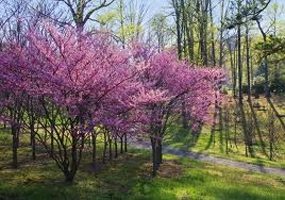Campsis radicans, Trumpet Creeper, Wholesale Native Bare Root Perennials
$10.00
Out of stock
Campsis radicans, Trumpet Creeper, Wholesale Native Bare Root Perennials
Wholesale pricing is based on quantity.
1 or more $10.00 each
5 or more $6.00 each
25 or more $3.74 each
50 or more $2.25 each
250 or more please call 443-831-2986
For Shipping, Install and additional info please see “About Bare Root“.
Native bare root perennials are dug and shipped while dormant, mid October to early spring.
See all available Native Bare Root Perennials
Check the native status of this species for your area via the USDA Plants Database here
Order Minimum
There is a minimum order total of $150.00.
before tax (VA residents only) and shipping.
There are NO EXCEPTIONS.
Description
Campsis radicans, Trumpet Creeper, Wholesale Native Bare Root Perennials
For Shipping, Install and additional info please see “About Bare Root“.
Native bare root perennials are dug and shipped while dormant, mid October to early spring.
See all available Native Bare Root Perennials
Check the native status of this species for your area via the USDA Plants Database here
Campsis radicans
Campsis radicans (L.) Seem. ex Bureau
Trumpet Creeper, Trumpet Vine, Common Trumpet Creeper, Cow Vine, Foxglove Vine, Hellvine, Devil’s Shoestring
Bignoniaceae (Trumpet-Creeper Family)
Synonym(s): Bignonia radicans, Tecoma radicans
USDA Symbol: cara2
USDA Native Status: L48 (N), CAN (N)
A high-climbing, aggressively colonizing woody vine to 35 ft., climbing or scrambling over everything in its path by aerial rootlets. The pinnately compound leaves with 4 to 6 pairs of leaflets and a terminal one on an axis up to 12 inches long. Leaflets dark green on the upper surface, lighter on the lower, broadly to narrowly ovate, with coarse teeth, an elongate tip, and a rounded to wedge shaped base, the blade extending along the petiolule (leaflet stem) to its base. Flowers showy, waxy, broadly trumpet shaped, up to 3 1/2 inches long, orange to reddish orange, clustered at the ends of branches, appearing throughout the summer. Fruit a pod up to 6 inches long with 2 ridges running lengthwise, tapering more gradually to the base than to the tip, and roughly round in cross section.
Native to eastern North America as far north as Ohio and South Dakota, this vine is often cultivated for its attractive, reddish orange flowers and can escape cultivation, sometimes colonizing so densely it seems a nuisance, particularly in the southeast, where its aggressive habit have earned it the names Hellvine and Devil’s Shoestring. Its rapid colonization by suckers and layering makes it useful for erosion control, however, and its magnificent flowers never fail to attract Ruby-throated Hummingbirds within its range. Adapted to eastern forests, Trumpet creeper grows tall with support. It climbs by means of aerial rootlets, which, like English Ivy, can damage wood, stone, and brick. To keep it in check, plant it near concrete or an area that you can mow; mowing down the suckers will discourage them. Fairly drought tolerant within its range. Blooms most in full sun.
Plant Characteristics
Duration: Perennial
Habit: Vine
Leaf Retention: Deciduous
Leaf Arrangement: Opposite
Leaf Complexity: Pinnate
Leaf Shape: Elliptic , Lanceolate , Obovate , Ovate
Leaf Venation: Pinnate
Leaf Margin: Dentate
Leaf Apex: Acuminate , Obtuse
Leaf Base: Cordate
Breeding System: Flowers Unisexual , Monoecious
Inflorescence: Panicle
Size Notes: 25-35 ft.
Leaf: Green
Autumn Foliage: yes
Flower: Flowers 3-4 inches long
Fruit: Brown 3-5 inches
Size Class: 12-36 ft. , 36-72 ft.
Bloom Information
Bloom Color: Red , Orange , Yellow
Bloom Time: Jun , Jul , Aug , Sep
Bloom Notes: Usually reddish orange. Yellow cultivars have been produced.
Distribution
USA: AL , AR , CO , CT , DC , DE , FL , GA , IA , IL , IN , KS , KY , LA , MA , MD , MI , MO , MS , NC , ND , NE , NH , NJ , NY , OH , OK , PA , RI , SC , SD , TN , TX , UT , VA , WI , WV
Canada: ON
Native Distribution: Eastern North America from Indiana, Ohio and New Jersey down to Florida and eastern Texas and north to South Dakota.
Native Habitat: In trees of moist woods or along fence rows in old fields.
Growing Conditions
Water Use: Low
Light Requirement: Sun
Soil Moisture: Dry , Moist
Soil pH: Circumneutral (pH 6.8-7.2)
CaCO3 Tolerance: High
Drought Tolerance: High
Cold Tolerant: yes
Heat Tolerant: yes
Soil Description: Various well-drained soils. Sandy, Sandy Loam, Medium Loam, Clay Loam, Clay, Limestone-based, Caliche type
Conditions Comments: Blooms most in full sun.
Benefit
Use Ornamental: The plant is frequently cultivated because of its large clusters of attractive, bright red flowers. Several cultivars have been developed, including yellow-flowered varieties and a cross with the Asian species, Campsis grandiflora, which has broader flowers but is less hardy than our native species.
Use Wildlife: Pollinated by hummingbirds and long tongued bees.
Warning: The sap of this plant can cause skin irritation on contact.
Conspicuous Flowers: yes
Interesting Foliage: yes
Attracts: Hummingbirds
Larval Host: Trumpet Vine Sphinx Moth (Paratraea plebeja)
Nectar Source: yes
Deer Resistant: Moderate
Butterflies and Moths of North America (BAMONA)
Plebeian sphinx
(Paratrea plebeja)
Larval Host
Learn more at BAMONA
Campsis radicans, Trumpet Creeper, Wholesale Native Bare Root Perennials
For Shipping, Install and additional info please see “About Bare Root“.
Native bare root perennials are dug and shipped while dormant, mid October to early spring.
See all available Native Bare Root Perennials
Check the native status of this species for your area via the USDA Plants Database here
Related products
-

UPS Shipping Fee
Read more -

Cornus florida, Flowering White Dogwood 18-24″ Wholesale Native Bare Root Trees, Ships spring only!
$8.50 Add to cart -

Betula nigra, River Birch 2-3ft Wholesale Native Bare Root Trees
$3.75 Add to cart -

Cercis canadensis, Redbud 18-24″ Wholesale Native Bare Root Trees, Ships spring only!
$8.00 Add to cart
